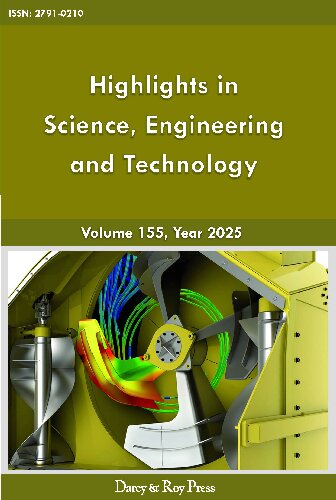Effects Of Lamprey Sex Ratio on Ecosystem Stability Based on Graph Neural Network and Deep Learning
DOI:
https://doi.org/10.54097/y5ejv868Keywords:
Gender ratio, Ecosystem stability, Graph neural network, Deep learning, Data visualization.Abstract
The purpose of this study was to explore the impact of the dynamic adjustment of the sex ratio of lamprey on the stability of the ecosystem. The ecological effects of the sex ratio under different resource conditions were analyzed by constructing logistic model, genetic algorithm and deep learning prediction model combined with graph neural network. The study found that the dynamic adjustment of gender ratio can significantly improve the robustness of the ecological network, and its stabilizing effect can be reflected through the network centrality and the optimization of community structure. The results of data visualization show that the coupling effect of gender ratio change and resource availability can be visualized through dynamic thermal map and three-dimensional interactive map. The innovation of this study is to introduce graph neural network and deep learning technology into ecological research, which effectively makes up for the shortcomings of traditional models in dealing with the dynamics of complex ecological networks, and provides a new analytical framework for the ecological mechanism of gender ratio regulation. In addition, the research and development of prediction tools based on deep learning has high application feasibility, which can provide accurate decision support for ecosystem management and help the sustainable management and protection of ecosystems.
Downloads
References
[1] Zhao Lingling. Sex Ratio Imbalance in Animal Populations and Its Influencing Factors [J]. Animal Husbandry and Feed Science, 2014, No. 5: P80-81.
[2] Feng Yuting, Zhou Caiying, Zhan Xinlong. Research on Aquatic Animal Sex Ratio Variation Based on the Lotka-Volterra Population Dynamics Model [J]. Advances in Applied Mathematics, 2024, Issue 5: P2469-2475.
[3] Wu Cankai. Research on Feature Selection Methods Based on Genetic Algorithm [D]. Wuhan: Huazhong University of Science and Technology, 2024.
[4] Ma Shuai, Liu Jianwei, Zuo Xin. A Survey on Graph Neural Networks[J]. Journal of Computer Research and Development, 2022, Vol. 59(No. 1): P47-80.
[5] Yang Chun, Zhang Ruiyao, Huang Long, et al. A Survey on Quantization Methods for Deep Neural Network Models[J]. Chinese Journal of Engineering, 2023, Vol. 45(No. 10): P1613-1629.
[6] Zhao Qidan. Error Analysis-Based Local Logistics Model and Its Application [D]. Shanxi: Shanxi University, 2024.
[7] Yan Weipo, Guo Yalin, Wang Qing, et al. Theoretical Model and Method for Evaluating Resource and Environmental Carrying Capacity Under Dynamic Supply-Demand Balance [J]. World Sci-Tech R&D, 2023, No. A1: P114-123.
[8] Yu Yueming. Research on Key Technologies of High Robustness Machine Learning [D]. Xi'an: Xidian University, 2024.
[9] Zhang Li, Tian Mi, Li Kai. Optimization of Codonopsis Pilosula Polysaccharide Extraction Process Using Genetic Algorithm Combined with Backpropagation Neural Network [J]. Journal of Food Safety and Quality Inspection, 2020, Vol. 11 (No. 24): P9563-9567.
[10] Tao Jun, Zhang Yu, Chen Qing, et al. Intelligent Visualization and Visual Analytics[J]. Journal of Image and Graphics, 2023, Vol. 28(No. 6): P1909-1926.
[11] Li Zhouyuan, Ye Xiaozhou, Wang Shaopeng. Ecosystem stability and its relationship with biodiversity [J]. Chinese Journal of Plant Ecology, 2021, Vol. 45 (No. 10): P1127-1139.
Downloads
Published
Issue
Section
License
Copyright (c) 2025 Highlights in Science, Engineering and Technology

This work is licensed under a Creative Commons Attribution-NonCommercial 4.0 International License.


















